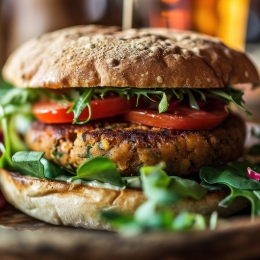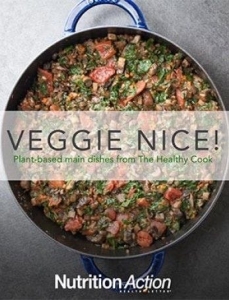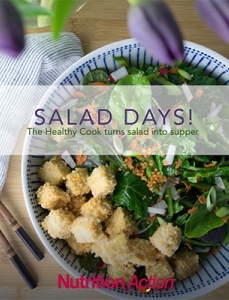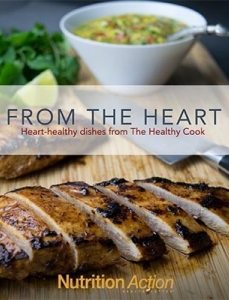How to find a healthier butter or spread
This article comes from Nutrition Action. We don't accept any paid advertising or corporate or government donations. Any products we recommend have been vetted by our staff and are not advertisements by the manufacturers.
Mooove over, butter. Everything from “I Can’t Believe It’s Not Butter!” to “plant” and “oat milk” butters are vying to unseat the spreadable dairy fat.
That’s a good thing. Most wannabes have far less artery-clogging saturated fat...and more heart-healthy unsaturated fat. Here are 8 tips to help you find the best non-butters, plus what else does (or doesn't) matter.
To jump to our chart of Best Bites vs. other spreads, click here.
1. Bypass butter.
Just a tablespoon of dairy butter has 7 grams of saturated fat—more than a third of a day’s max (20 grams). Some brands and “European style” butters have 8 grams.
Ghee (clarified butter) hits 9 to 10 grams—half a day’s worth. That’s because clarifying butter removes its milk solids and water, leaving mostly dairy fat.
So how does Organic Valley Ghee wind up with just 3 grams of sat fat per serving? It lists Nutrition Facts for 1 teaspoon, not the 1-tablespoon serving the FDA requires. (There are 3 teaspoons in a tablespoon.)
2. Butter & ghee aside, trans fat isn’t an issue.
Butter and ghee are the only places you’ll find trans in the buttery spread aisle. That’s because dairy fat has naturally occurring trans fat.
So why do their Nutrition Facts labels show “0 grams” of trans fat? Because each 1-tablespoon serving typically has just under ½ gram, which rounds down to 0. But when it comes to raising LDL (“bad”) cholesterol, trans fat is more potent than saturated fat, so you can’t ignore trans in butter or ghee (or fatty beef, cream, etc.).
What about trans fat in other spreads? The FDA’s ban on using partially hydrogenated oils—the source of artificial trans fat—went into effect in 2018. So you won’t find trans fat of any kind in butter-free spreads or “plant butters,” whether or not their labels say “no hydrogenated oils.”
3. Pick a spread that comes in a tub.
Most buttery spreads like I Can’t Believe It’s Not Butter! are a blend of oils and water, whether they come in sticks or in tubs.
The difference: Sticks are made with more of the saturated-fat-rich oils, like palm and palm kernel, that keep them solid. That may matter if you’re baking (see "Pick a stick?"), but not otherwise.
Our Best Bites have no more than 2 grams of saturated fat per tablespoon. Nearly all are tubs.
4. Want real butter?
Get it mixed with oil. Most tubs of “butter with” canola oil or olive or avocado oil aren’t unsaturated enough to be Best Bites. But with around 3 to 5 grams of saturated fat per tablespoon, they sure beat regular butter’s 7 to 8 grams.
So do “whipped” butters. Added air means less butter, which translates into 3½ to 5 grams of sat fat per tablespoon. You’ll miss some unsaturated (healthy) fats that you’d get in the butter-plus-oil spreads, but you’ll also get fewer calories.
5. Check the sodium.
Most spreads don’t top 100 milligrams of sodium per tablespoon. That’s our limit for Best Bites.
If you’re watching every milligram, check our chart. Smart Balance Low Sodium, for example, has just 30 mg.
6. Sidestep sugar.
Sweetened butter-plus-oil tubs like Challenge Chocolate Dessert Spread & Dip and Land O Lakes Honey Butter Spread have a teaspoon of added sugar in every tablespoon. That means they’re one-third sugar. Our Best Bites have none.
7. Don’t fear unfamiliar ingredients. Look them up on Chemical Cuisine.
Take mono- and diglycerides, lecithin, potassium sorbate, citric acid, lactic acid, calcium disodium EDTA, and beta-carotene. Those safe additives may show up in many buttery spreads because they keep oil and water from separating, prolong shelf life to help prevent food waste, or lend a natural buttery hue.
A few spreads contain TBHQ, which we rate “avoid” on Chemical Cuisine. You won’t find it in our Best Bites.
8. Try one of our favorites.
Want a great-tasting spread that gets a Best Bite or just misses? Here are five winners.





Is "plant butter" healthier?

Pop quiz! Which is better for your heart: Miyoko’s European Style Cultured Vegan Butter (“100% crafted from plants”) or a tub of non-vegan Country Crock Original?
With only 1½ grams of saturated fat per tablespoon, Country Crock crushes Miyoko’s 8 grams. Coconut oil is Miyoko’s No. 1 ingredient, so it mimics dairy butter in taste, texture, and, alas, unhealthy fat.
Country Crock Original and most other tubs may not be “vegan” or “plant butter” because they contain tiny amounts of whey, buttermilk, yogurt, or other ingredients derived from animal products. But they’re mostly plant-based oils like soy, canola, or olive that have more unsaturated fat than coconut oil.
Want the health benefits of a plant-rich diet? Take your pick of our Best Bites. Vegan? Try I Can’t Believe It’s Not Butter! It’s Vegan or (Best Bite near miss) Earth Balance Organic Whipped.
What to know about "smart" claims

“Supports healthy cholesterol levels,” says the Smart Balance Original tub. The fine print (“already in the normal range”) finishes the sentence.
The bottom of the tub adds: “Clinical research has shown that the right blend of fats may improve your cholesterol ratio when at least 2/3 of your fat intake comes from this product or a properly balanced diet.”
Translation: Replacing saturated fats (from beef, pork, full-fat dairy, butter, coconut or palm oil, etc.) with unsaturated fats (from other oils, nuts, seafood, avocado, mayo, spreads, etc.) is good news for your cholesterol.
But a spread alone won’t do it. (Who gets two-thirds of their fat intake from a spread anyway?) So don’t assume that Smart Balance beats another brand’s Best Bite.
It’s really just smart marketing.
Pick a stick? Here's what to consider.

For topping toast or cooked vegetables or grains, any soft spread in a tub will do.
And even for baking, many cakes, muffins, and quick bread recipes call for mostly unsaturated oils like soy, canola, sunflower, etc. No spreads needed.
But pie crusts, some cookies, and things with a flaky texture call for a more solid—and saturated—fat. That means a stick. Most are still low enough in sat fat to beat butter. A few even get a Best Bite or just miss.
(If you’re using a salted stick to replace unsalted butter in a recipe, you may be able to use less salt than the recipe calls for. Check the stick’s sodium to adjust. A teaspoon of table salt has 2,300 mg.)
Since most sticks are less saturated than butter, refrigerate your cookie dough for 5 to 10 minutes to firm up before baking. That helps you get crisp edges and gooey centers.
Don't be fooled by "olive oil" names

Despite their names, Olivio Original, Country Crock Plant Butter with Olive Oil, and Smart Balance Made with Extra Virgin Olive Oil have more soy or canola plus palm oil than olive oil.
Soy and canola oil are fine. Like olive, they’re mostly unsaturated, which explains why the Olivio and Smart Balance have less than 2 grams of saturated fat per tablespoon. But if you bought them because you thought they’re mostly pricier olive oil, you’ve been hoodwinked.
Tubs of butter-plus-oil like Land O Lakes Butter with Olive Oil & Sea Salt add only olive oil, though none are Best Bites.
Do you need lactose-free or omega-3 spreads?

Most of us don’t need to worry about whether a spread supplies omega-3s or has zero lactose:
Lactose-free. Green Valley’s butter has added lactase enzyme to break down its lactose (milk sugar). But other brands of regular butter and nearly all spreads list “0 g” total sugar. That means they have less than half a gram of lactose per tablespoon. Even if you’re lactose intolerant, you can probably handle that.
Omega-3. That typically means ALA omega-3s, which occur naturally in oils like soy, canola, and flax, not the longer-chain EPA and DHA omega-3s in seafood that may protect your heart .
Continue reading this article with a NutritionAction subscription
Already a subscriber? Log in
Our chart of butters and buttery spreads
Best Bites have no more than 2 grams of saturated fat and 100 milligrams of sodium per tablespoon. We disqualified spreads with added sugar or with the additive TBHQ.
More shopping guides
Store-bought pre-seasoned tofu: Which is best?
Healthy Eating

How to find a healthy ice cream bar or frozen treat
Healthy Eating

How to find a healthy dairy or plant-based cheese
Healthy Eating
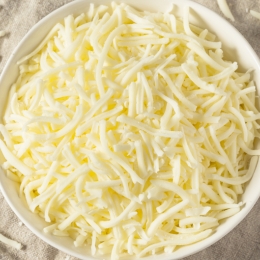
Can sodas help your gut health?
Healthy Eating
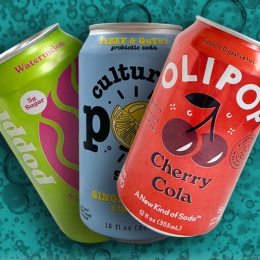
How to choose the best plant-based burgers & beyond
Healthy Eating
